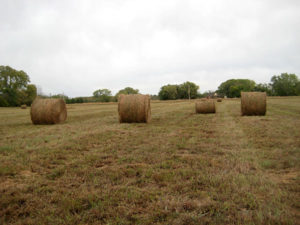By: Andrea Calderon Irazoque
The agricultural sector today is facing the daunting challenges of adapting to increasing impacts from climate change while minimizing greenhouse gas emissions and meeting ever-growing food demand. Crop-producing regions will be required to respond to these issues in the coming decades and their ability to do so will potentially affect all of humanity – even those living in highly urbanized areas. To put things into perspective, according to the United Nations, food demand is predicted to double by 2030.
In response to these concerns Nature Climate Change recently published a web focus collection “A new climate for farming”. The collection includes sixteen recent publications by AgMIP and other authors, including research articles, letters and opinion pieces addressing three essential topics: climate change impacts on agriculture, the influence of agriculture on the climate and our capacity to adapt to these challenges. Highlights of the contributions are succinctly summarized below.
Climate Change Impacts On Agriculture
Crop Models
The editorial of the collection, “Yields and more,” is an overview of topics included in the web focus. The editors highlight the importance of crop models as the best tool available to simulate future climate change impacts on yields. The Agricultural Model Intercomparison and Improvement Project (AgMIP) is named as one of the leading efforts to improve these crop models and evaluate their relative performance, addressing some of the challenges and general lessons regarding the potential impacts of climate change on crops and agricultural yields.

The letter “Uncertainty in simulating wheat yields under climate change” by Asseng and others (2013) presented thelargest standardized model intercomparison for climate change impacts on wheat yields. The authors conclude that projections from individual crop models fail to represent uncertainties known to exist in crop responses to climate change. However, model ensembles have the potential to quantify the significant crop component of uncertainty.
In the commentary “Crop–climate models need an overhaul” by Rötter and others (2011), AgMIP scientists state the urgency of focusing research on rigorous multi-model ensembles that can lead to more accurate estimates of the amount of food that can be grown in a warmer world. This approach has the potential to provide robust and useful information for farmers and policymakers in the coming decades.
Food Security
In the commentary “Fertilizing hidden hunger,” AgMIP researchers Müller, Elliott and Levermann (2014) analyze the evidence of negative impacts of high CO2 levels on crops. They explain that even if CO2 fertilization could compensate for the impact of climate change on crop yields, it comes at the expense of decreasing the nutritional value of food. A more detailed analysis of this commentary was made in the AgMIP blog post: Are increasing CO2 emissions causing hidden hunger?
Extreme events
The role of how extreme weather will affect crop yields still needs further investigation. The majority of crop impact studies focused on changes in the average state of the climate rather than in adverse weather events. Trnka M. and others (2014) in the article “Adverse weather conditions for European wheat production will become more frequent with climate change” analyze how the rising number of extreme events will increase crop failure. The authors studied fourteen sites across thirteen European countries representing the main wheat-growing areas in the continent. They showed that occurrence of adverse events might substantially increase by 2060 compared to the present (1981-2010). This could lead to global repercussions, since Europe produces around 30% of worldwide wheat supply.
